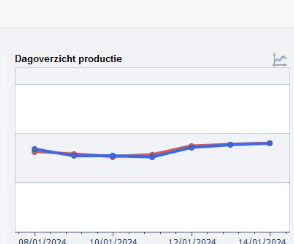Automatic Milk Permission.
This is not the first time that we have Tippen about the automatic milk permission.
Since DelPro update 10.x, the possibilities have been expanded again, hence this Tip.
We used to have 3 possibilities, for the newly milked cows, for the cows that are further in lactation and for the cows that almost have to be dried off.
Then in the first period the hours after the last milking and in the second period the expected milk yield were leading for permission for the next milking.
This has been expanded to 5 possibilities, and in this way we can make the milk permission even more gradual.
We still give the cows permission again in the first period, the first 50 – 60 days after calving, from 5 hours after the last milking. But afterwards, depending on milk production and occupancy on the robots, the permission for hours after the last milking can be increased more gradually. But those hours still need to be increased, for example in the first period to 5 hours but second period to 7 or 8 and third period to 8 or 9. The penultimate period to 9 or 10 and for drying off the hours to 11.
We leave the expected milk yield almost the same, for heifers to 8 or 9 litres and older cows to 9, 10 or 11 litres, depending on the daily production of your cows and the occupancy on the robots.
All this with the aim of distributing the available milkings per day, at most companies between 150 and 200 milkings, as efficiently as possible. And for the individual cow it also applies: both too often and too few milkings per day are not good for the udder health.
We only lower these settings in the first weeks after you have started with the robot(s) and sometimes for a short period if the cows are not coming well.
But especially the latter must be solved differently!







